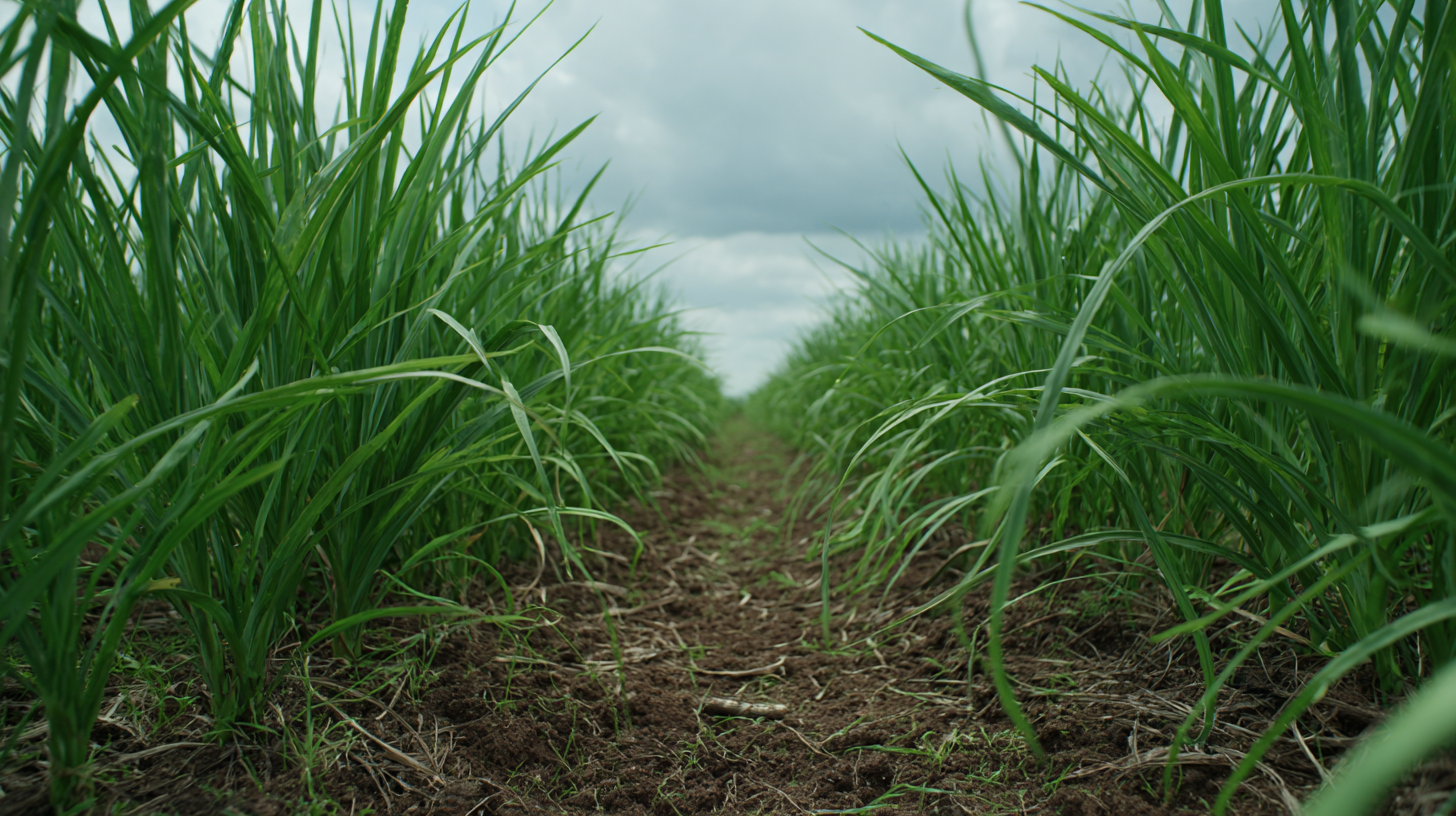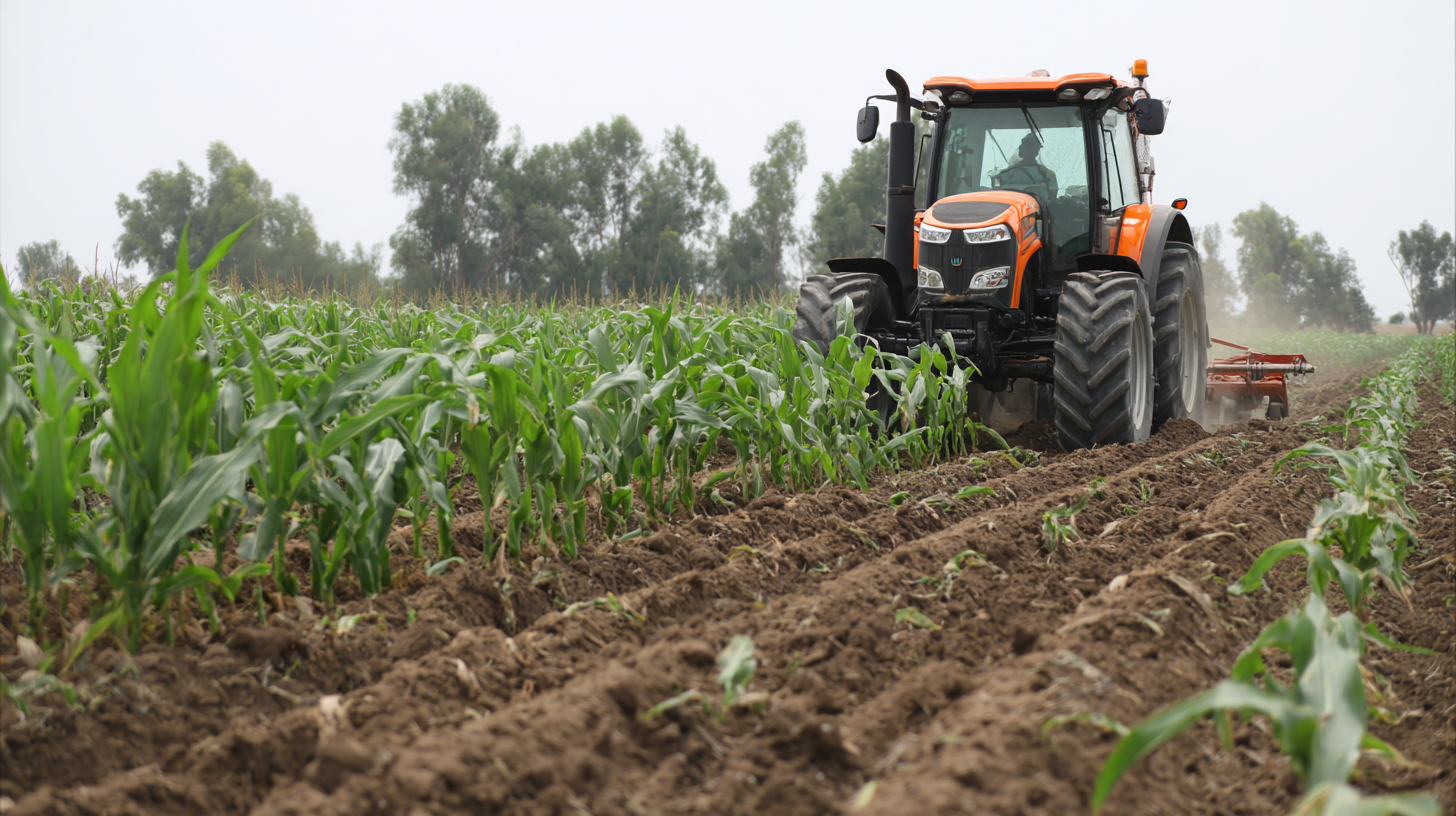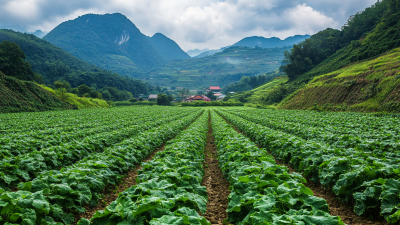 0551-68500918
0551-68500918 





When it comes to sustainable farming these days, finding smarter ways to boost crop yields has really become more important than ever. Did you know that the global market for agrochemicals is expected to hit around $300 billion by 2025? That’s mainly because more folks are realizing how crucial food security and eco-friendly farming practices are.

At Innovation Meiland (Hefei) Co., LTD., we’re all about pushing the boundaries—developing new pesticides, better formulations, and innovative processes to meet these rising needs. By bringing the latest agrochemical solutions into the fields, farmers aren’t just getting better harvests; they’re also doing their part to protect the environment.
Long-term sustainability really depends on this balance, after all. This blog’s got some top tips on how to maximize your yields using Agro Chemicals effectively—insights that really hit the mark when it comes to sustainable farming.
Sustainable farming is all about taking a big-picture approach to agriculture—sort of like finding that sweet spot between getting good yields and caring for the environment. When farmers get the hang of sustainable practices, they’re not just boosting their harvests; they’re also helping to keep ecosystems healthy and resilient. Things like growing a variety of crops, taking care of the soil, and using water and chemicals responsibly—all these little steps add up to making sure farming can stick around for the long haul.
Now, incorporating high-quality agrochemicals into this mix can really give crop yields a helpful boost—without messing up the environment too much. When used smartly—meaning tailored to specific crops and local conditions—these chemicals can help plants grow better and protect them from pests and diseases. Plus, how and when you apply them matters a lot. Done right, they support the natural processes happening in the ecosystem, which means better quality produce and bigger harvests. More farmers are catching on to the whole sustainability thing, and that means they're making smarter choices—ones that boost productivity today and set us up for success in the future.
When it comes to sustainable farming these days, choosing the right agrochemicals really makes a difference in boosting crop health and yields. Did you know that the global market for these chemicals is expected to grow by about $300 billion by 2025? It’s pretty wild! Most of this growth is fueled by new innovations in biopesticides and fertilizers — tools that not only help crops produce more but also do a better job at protecting the environment. For example, using products with natural insecticides can cut pest damage by up to 30%, leading to healthier, more robust crops.

Plus, key agrochemicals like humic and fulvic acids have shown some serious benefits for soil health. According to the USDA, applying these organic stuff can boost water retention by over 30% and make nutrients more available to plants. On top of that, adding nitrogen-fixing agents can increase soil nitrogen levels, which can bump up overall crop yields by around 20%. When farmers incorporate these chemicals thoughtfully, they’re not just aiming for higher production — they’re also helping promote more sustainable farming practices that keep our ecosystem in balance and support food security down the line.
When it comes to sustainable farming, finding the right balance with fertilizers and pesticides is really key. According to the FAO, smart farming practices can bump up crop yields by up to 30%. And honestly, using agrochemicals wisely plays a big part in that. If farmers choose fertilizers carefully—things that boost nutrients without harming the soil—they can really improve soil health in the long run. For example, slow-release fertilizers have been shown to cut down nutrient runoff by around 30%, which is great for the environment.
On the flip side, pesticides—when used responsibly—are also super important. They help protect crops from pests and diseases, which means better yields all around. I read a study by the IFA that said combining integrated pest management with both organic and synthetic fertilizers can lift yields by up to 20%, all while keeping the environment in mind. It’s really about finding that smart sweet spot—productivity without sacrificing your soil or the planet. In the end, this kind of balanced approach helps farmers grow healthy crops and keep our ecosystems happy and balanced.
| Strategy | Description | Agrochemical Type | Impact on Yield (%) | Soil Health Impact |
|---|---|---|---|---|
| Precision Application | Using technology to apply fertilizers and pesticides only where needed. | Fertilizers, Pesticides | 20-30% | Improves soil nutrients |
| Crop Rotation | Changing the type of crop grown in a particular area each season. | N/A | 15-25% | Enhances soil structure |
| Integrated Pest Management | Combining biological, cultural, and chemical tools to manage pests sustainably. | Pesticides | 10-20% | Minimizes chemical use |
| Organic Amendments | Adding organic materials to improve soil health and increase fertility. | Compost, Manure | 5-15% | Enhances biodiversity |
| Soil Testing | Regularly testing soil to inform nutrient and Chemical Application. | Fertilizers | 15-20% | Maintains nutrient balance |
Getting the hang of applying agrochemicals properly is super important if you want to boost yields and keep farming sustainable at the same time. You know, research shows that if not done right, a lot of those chemicals just don't do their job—up to 30% can actually go to waste because they never hit the target (FAO, 2021). That’s where new tech like GPS-guided sprayers and drones really come in handy. They help ensure you're spraying exactly where and when it counts, which not only cuts down on waste but also makes the whole process more eco-friendly and helps your crops thrive.
And let's not forget timing—applying fertilizers at the right moments makes a big difference! The Agrochemical Users Association points out that giving plants nutrients early in their growth can boost nutrient uptake by about 25% compared to waiting until later. Plus, if you can pair your applications with weather data, you'll reduce runoff and leaching, which is a big win for sustainability. Honestly, using these smarter techniques doesn’t just mean higher yields; it’s also about doing right by the environment, leading us towards a more sustainable future in farming.
When we think about sustainable farming these days, one big thing is the environmental impact of agrochemicals like fertilizers and pesticides. It’s pretty astonishing that, according to the Food and Agriculture Organization, about 40% of the world’s food relies on these chemicals. But here's the catch—misusing them can cause serious environmental problems. Things like soil getting worn out, polluted water sources, and a real decline in biodiversity are all tied to these chemicals when they’re not used carefully. A study in 'Environmental Pollution' even pointed out that when farmers wrongly apply agrochemicals, it can mess up local water supplies and harm aquatic life. In fact, over 30% of freshwater species are at risk because of runoff from farming activities.

To tackle these issues, more farmers are now jumping on board with techniques like integrated pest management (IPM) and precision agriculture. According to the Global Alliance for Climate-Smart Agriculture, using IPM can cut down chemical use by up to 30%. Plus, precision farming uses tech to target exactly where and when chemicals are needed—so there’s less wasted and less environmental harm. When farmers adopt these smarter, more sustainable practices, they’re not just boosting their crop yields — they’re also helping to protect our ecosystems. It’s all about finding that balance where agriculture can thrive without trashing the planet, making sure agrochemicals are used responsibly and sustainably.
Lately, more farmers have been jumping on the bandwagon of sustainable farming practices. They're especially interested in boosting crop yields without harming the environment — it’s like hitting two birds with one stone, right? There’s this interesting case study that really stands out, showing how using the best agro chemicals can lead to pretty impressive improvements in harvests. For example, according to the Food and Agriculture Organization (FAO), combining integrated pest management (IPM) with smarter, targeted agrochemicals can crank up yields by up to 30% on key crops like corn and wheat. What’s cool about this approach is that it doesn’t just tackle pests; it also makes farms more resilient overall, which means farmers see better returns on their investments.
And check this out — there was a recent study published in the Journal of Sustainable Agriculture about a trial in East Africa. Farmers there started using bio-pesticides alongside their usual fertilizers. The results? They got about a 25% bump in production over two seasons, and they managed to cut their chemical expenses by around 15%. It’s a win-win sort of thing—using agro chemicals smartly not only boosts yields but also benefits the environment and farmers’ wallets. When farmers take advantage of advanced agro chemical tech like this, they can really make their farms more productive and sustainable. Basically, it’s paving the way for a future where agriculture is both profitable and eco-friendly.
: The global agrochemical market is expected to grow by approximately 3.1% annually, reaching a value of $300 billion by 2025.
Products containing natural insecticides can reduce pest-related losses by up to 30%, promoting healthier crop development.
The utilization of humic and fulvic acids can increase water retention by over 30% and enhance nutrient availability for plants.
Applying nitrogen-fixing agents can boost soil nitrogen levels, resulting in a 20% increase in overall crop productivity.
The integration of fertilizers and pesticides optimizes soil health and maximizes crop yield, potentially increasing crop yields by up to 30%.
Slow-release fertilizers can reduce nutrient runoff by 30%, promoting a healthier ecosystem.
IPM is an approach that combines different management strategies to reduce chemical usage by up to 30%, while protecting crops against pests and diseases.
Misuse of agrochemicals can lead to soil degradation, water pollution, and loss of biodiversity, with over 30% of freshwater species at risk due to agricultural runoff.
Precision agriculture technologies lead to better-targeted applications, reducing the excessive use of chemicals and minimizing negative environmental outcomes.
By implementing sustainable agricultural practices, farmers can achieve higher yields while maintaining ecological balance, which supports long-term food security.







